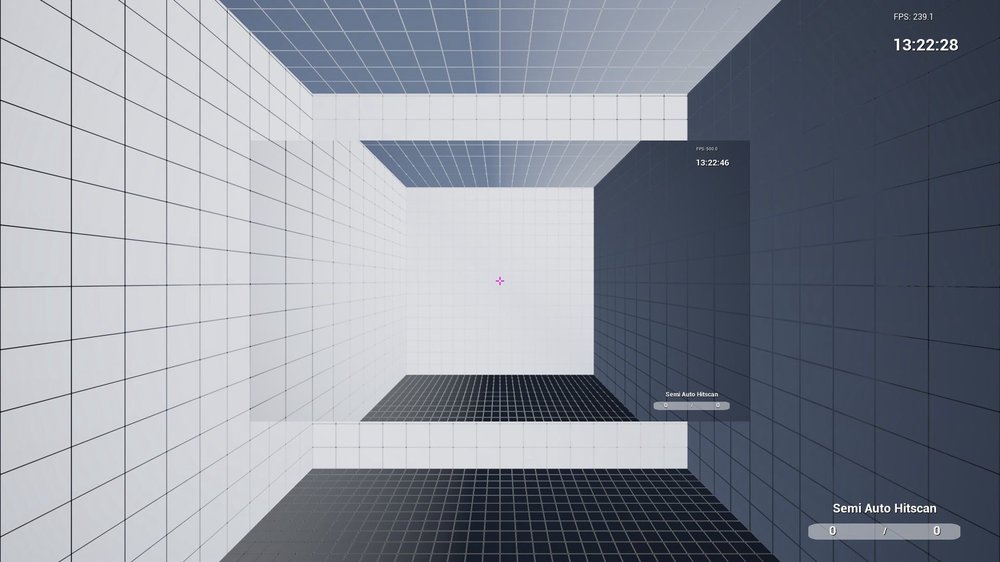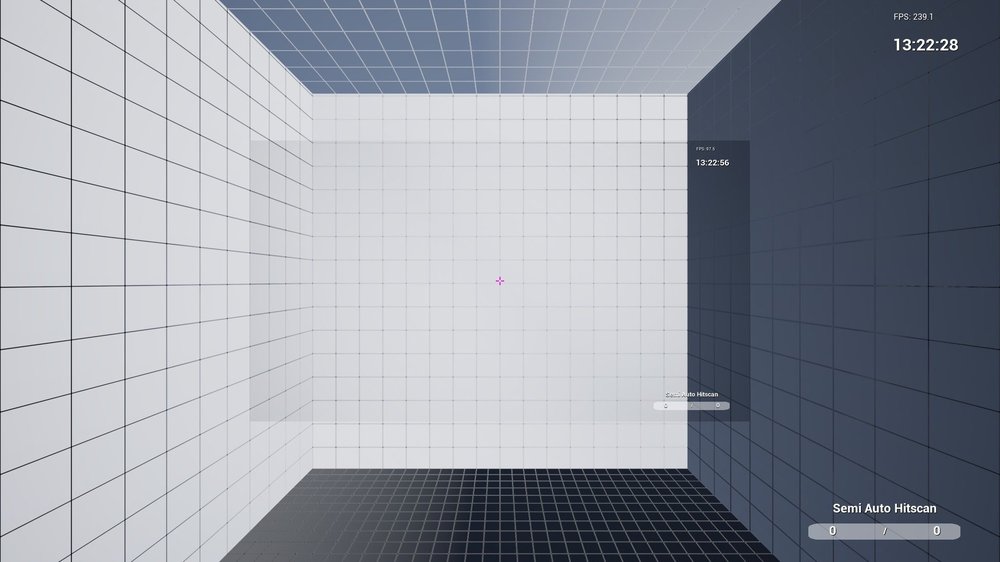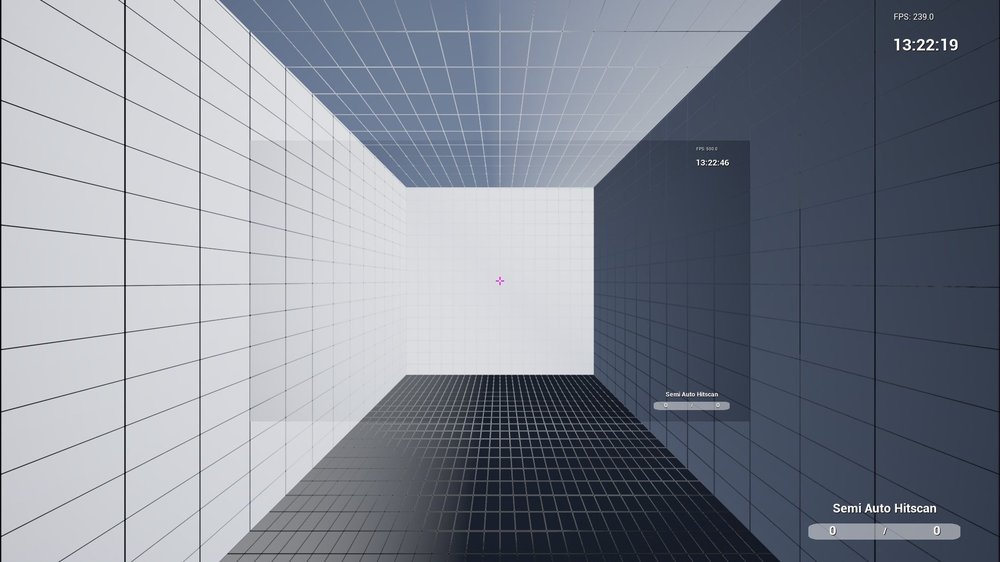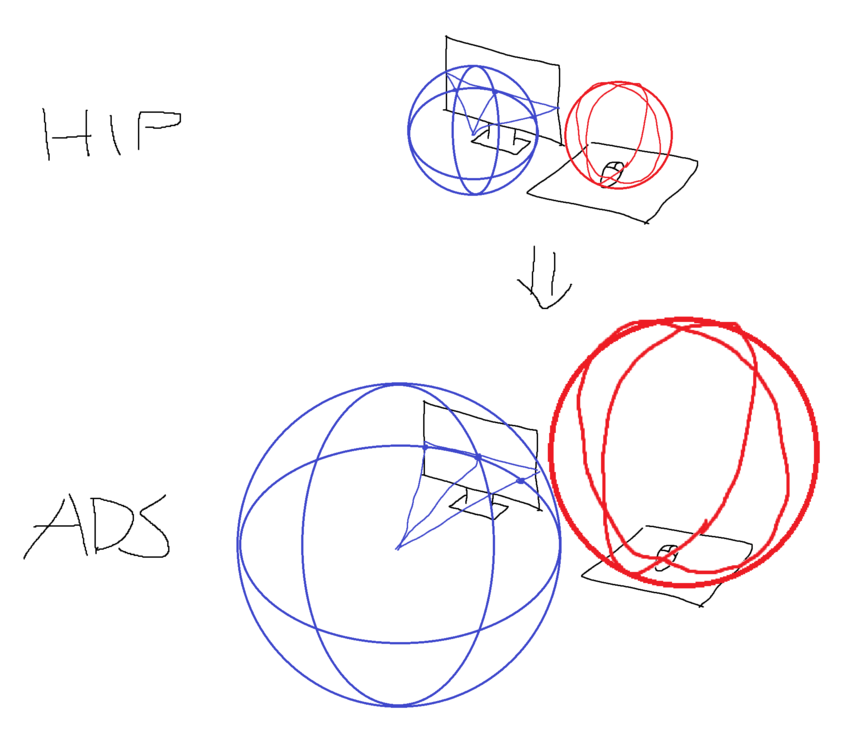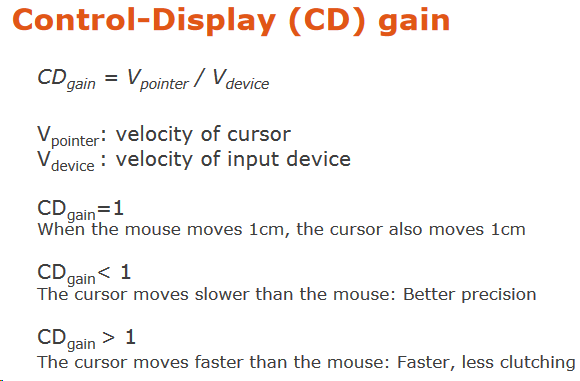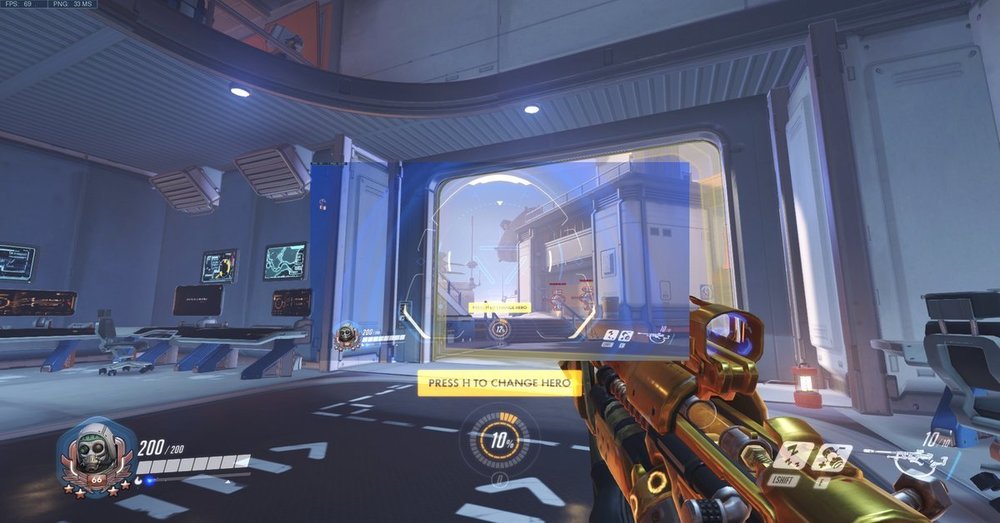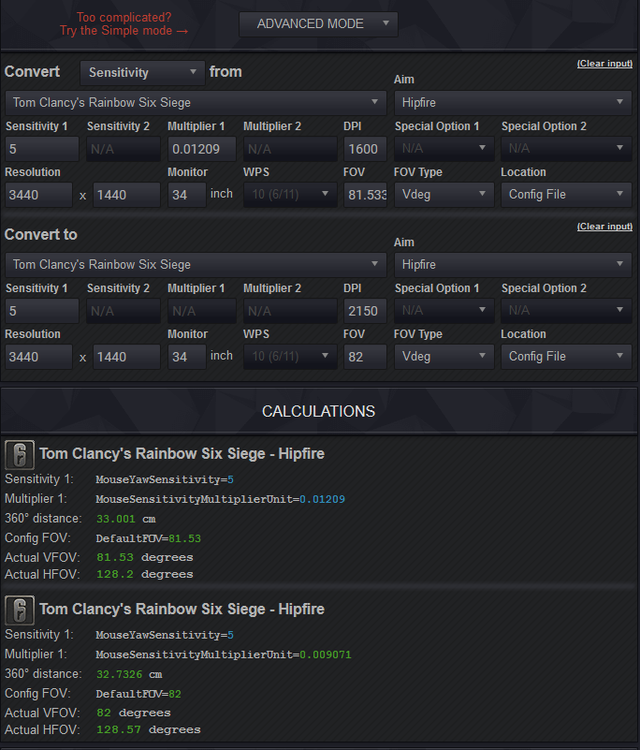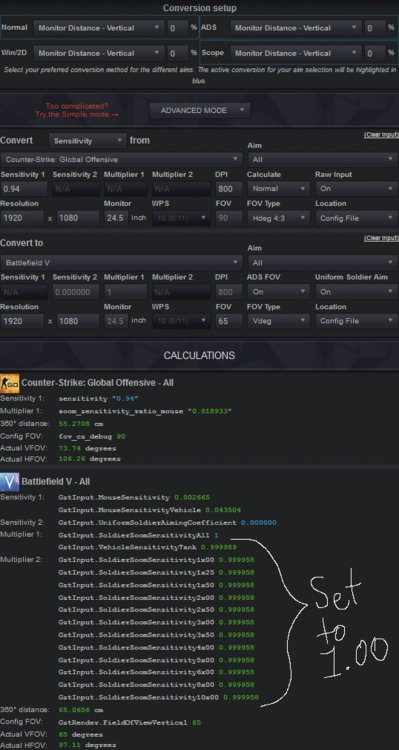-
Posts
1,211 -
Joined
-
Days Won
91
Content Type
Profiles
Forums
Updates
Release Notes
Store
Everything posted by Drimzi
-

Conversion method guide. (and other FAQ's)
Drimzi replied to Skidushe's topic in Technical Discussion
I just convert everything from Windows. It doesn't really matter though, it just makes it feel the same. It doesn't make you aim better or anything. Also I would prefer if you didn't quote the whole entire post. -
Use the defaults. Rule of thumb Use 360 Distance to preserve the rotational distance (good for movement). Use Monitor Distance - Vertical/Horizontal 0% to preserve the mouse sensitivity (good for aiming).
- 3 replies
-
- conversion method
- help
-
(and 4 more)
Tagged with:
-

converting sens from fortnite to ring of Elysium
Drimzi replied to MarXmen_Ws92's topic in Technical Discussion
Fortnite shows a different value in game. It's a 3 decimal number. In the config file, it's a 6 decimal number that is 1/4 of the ingame value. Wasn't sure if you were using the ingame value or the config value since you had a number with 4 decimals. Anyway the rest of the calculator is correct. I would recommend changing it to Monitor Distance - Vertical 0% as that will have greater compatibility. Horizontal 0% would give incorrect results for games like CSGO with blackbars, where you switch to a 4:3 aspect ratio to cut off some of the horizontal field of view. The change in horizontal fov will change the result even though it shouldn't because the game didn't zoom in/out. Rule of thumb Use Monitor Distance - Vertical 0% to preserve the mouse sensitivity. Use 360 Distance to preserve the mouse movement for navigation (basically anything that isn't aiming). -

converting sens from fortnite to ring of Elysium
Drimzi replied to MarXmen_Ws92's topic in Technical Discussion
In-game only has 3 decimals. Are you referring to the savefile value, revealed by ClientSettingsEditor? You need to change the location to Savefile. -

converting sens from fortnite to ring of Elysium
Drimzi replied to MarXmen_Ws92's topic in Technical Discussion
You wrote 0.0156 instead of 0.156. -

converting sens from fortnite to ring of Elysium
Drimzi replied to MarXmen_Ws92's topic in Technical Discussion
Show what you did because I don't get 15. I get 67. -
2.712868 is correct. Don't change the fov type of the game unless the game allows you to. You only use that option to quickly see what the value is for other measurements so you can set other games to the same fov. I recommend switching to Monitor Distance - Vertical 0%. Horizontal can give the wrong results if you play with black bars. For example, it will give a different result if you put CSGO at 4:3, since the horizontal fov goes from 106.26 to 90. The focal length doesn't change though, so you shouldn't be changing the sensitivity at all. The vertical fov remains at 73.74, so Monitor Distance - Vertical 0% will still give the same result, which is correct. If you want to keep the same 360 distance in a game, change the input game from Windows/Desktop to CSGO and change the 'Normal' conversion method to 360 distance. 360 distance preserves the mouse movements for navigation, but you get a different mouse sensitivity. 0% preserves the mouse sensitivity, but you will end up with smaller/larger mouse movements for navigation. Other methods will preserve other characteristics that don't really have any benefit imo.
-

Should I use viewspeed or monitor distance for muscle memory?
Drimzi replied to Skidushe's topic in Technical Discussion
My reasoning https://www.mouse-sensitivity.com/forum/topic/4704-conversion-method-guide-and-other-faqs/?do=findComment&comment=20696 -

Conversion method guide. (and other FAQ's)
Drimzi replied to Skidushe's topic in Technical Discussion
The Sensitivity Rating (A comparator for perceived sensitivity) The Sensitivity Rating is a best-effort value used for measuring and comparing the perceived sensitivity. For 2D, the sensitivity rating is called 'Control-Display Gain' (CD Gain). For 3D, the sensitivity rating doesn't really have a term. 'Curvature Focal Length Product' (CFLP) has been suggested to me. The 360° distance (cm/360°, cm/rev) is not a measurement of sensitivity. It is just the distance to rotate one revolution. It can't be used for comparison reasons and you can't just preserve the 360° distance and expect the mouse to feel the same. An identical 360° distance at a low and high magnification will result in a higher sensitivity rating for the low magnification and a lower sensitivity rating for the high magnification. The 360° distance is only useful to imagine and preserve the general mousepad utilisation and mouse swipes used for navigation. If you want to know what your sensitivity rating is, you can use this calculator. Ignore the whole graph thing. Just look to the results in the left column. Fill in the variables. Look for the CD Gain value for 2D and 3D. The default values have a 4.45 sensitivity rating. Measuring 2D Sensitivity (Control-Display Gain) 2D sensitivity is measured as the ratio between mouse and cursor velocity (or displacement). To calculate the 2D sensitivity, you need to know the following: Mouse CPI (the number of counts reported by the mouse after an inch of displacement) Windows Pointer Speed (the number of counts required to increment a pixel) Monitor Size and Resolution (to find the distance of a pixel) Visualisation: Mouse moves 1 unit, cursor moves 1 unit. There is a 1:1 ratio, or a 1 Sensitivity Rating. Mouse moves 1 unit, cursor moves 3 units. There is a 1:3 ratio, or a 3 Sensitivity Rating. Measuring 3D Sensitivity (Curvature Focal Length Product) 3D sensitivity is measured as the ratio between the virtual projection circumference and the physical sensitivity circumference (cm/360°). To calculate the virtual projection circumference, you need to know the following: Game field of view (to calculate the focal length in pixels, which is the radius for the virtual projection. 2pi * radius = circumference) Monitor Size (to know the size of a pixel, and convert the focal length to a physical measurement) To calculate the physical sensitivity circumference, you need to know the following: Mouse CPI (the number of counts reported by the mouse after an inch of displacement) Rotation Increment (the degrees rotated per count) Visualisation: Virtual projection circumference, focal length, and field of view. Visualisation: The ratio between the virtual projection and physical sensitivity in a spherical form, and how the ratio should be preserved when changing field of view (achieved with MDV 0%). If the virtual projection and physical sensitivity have the same circumference (they are the same size sphere), then it will be a 1:1 ratio, or a 1 Sensitivity Rating. If the virtual projection has a 3x larger circumference than the physical sensitivity, then it will be a 1:3 ratio, or a 3 Sensitivity Rating. Why MDV/MDH 0% is the correct conversion 0% preserves the sensitivity rating. It scales the physical sensitivity circumference by the change in the virtual projection circumference (2pi * focal length). When you change the field of view, what happens is the game zooms in or out to fit the desired angle of view into the monitor space. It accomplishes this zoom by changing the radius (focal length). When the field of view changes, there are many observable properties in the image that change: Scale (the size of objects relative to the monitor) Velocity (the speed that objects move relative to the monitor) Curvature (the amount of virtual projection curvature relative to the monitor) These properties don't scale by the change in field of view itself, but rather the change in focal length. It makes sense that the physical sensitivity will also change by the same factor. The change in field of view itself has no impact on your perceived sensitivity. You can obstruct some of the field of view with black cardboard, cropping the visible field of view from a 16:9 aspect ratio to a 4:3 aspect ratio and the sensitivity will feel the same. Sidenote: The term '0%' is only used in this post because that is the option in the mouse-sensitivity.com calculator that scales by the change in focal length. The idea of '0% Monitor Distance' is the completely wrong framework (2D). It results in the correct answer, but it implies that the sensitivity is only correct under the crosshair, and incorrect everywhere else. It also implies that scaling by the change in field of view itself results in the sensitivity being correct for different points on the screen. This is false. Distance is not sensitivity, 2D distance is meaningless, and 2D distance is only observable in the rarest most cherry picked case. Hopefully in the future, the method will be separated from the 2D framework. Why 0% can still feel 'wrong' or uncomfortable General navigation is the most obvious. Different games have different field of view restrictions. If you convert 0% for hipfire, you will end up with a different physical sensitivity circumference for each game. This results in different mousepad utilisation and mouse swipes for general navigation. Low field of view games can become a chore, with big swipes just to look around. In this case, preserving the 360° distance instead can be more optimal for performance. It will be perceived sensitivity that will change with the focal length rather than the physical sensitivity. For aiming however, the difference in feeling that you get is due to the image curvature rather than the sensitivity itself. The higher the field of view, the more curved the image will be, and vice versa. Here is an extremely low fov, where only a tiny portion of the virtual projection sphere being projected onto the screen, which results in a very flat image. Even if you convert the sensitivity properly, you are aiming on a different curvature. Preserving the sensitivity is not enough to preserve aim performance, you still have to learn how to aim at different curvatures. Why Monitor Distance Matching isn't helpful Monitor Distance Match is matching a 2D screen space distance. You don't perceive rotational distance as a 2D distance. You don't move the camera's position in 3D space, you rotate it. It's only observable as a match in 2D screen-space distance if you do pure scripted vertical (pitch) movement. Pure scripted horizontal (yaw) movement can work too your pitch must be ~0. If you look up or down, yaw will follow follow an ellipse, making you spin like a ballerina. That horizontal point on the monitor that you were matched to is now impossible to reach. The scaling curve has no correlation with how the sensitivity feels. Change the field of view and sensitivity in real-time and the sensitivity will feel like it is fluctuating. Mouse-Sensitivity.com & Cross-Monitor Conversions Just be aware that the mouse-sensitivity.com calculator doesn't support cross monitor conversions for perceived sensitivity. 0% will only scale the relative change in focal length, it doesn't scale by the focal length itself. You can't use mouse-sensitivity.com to convert other people's sensitivity if the monitor size is different. Here is a picture of two different monitors (one is half the size of the other one) using the same field of view. The calculator doesn't know that these are different things. It just looks at the field of view number and thinks its the same. It will give you the wrong result. You will actually need two different cm/360° here, contrary to what the calculator says. Here, the small monitor has reduced the fov to match the focal length of the large monitor. Here, the large monitor has increased the fov to match the focal length of the small monitor. -

Should I use viewspeed or monitor distance for muscle memory?
Drimzi replied to Skidushe's topic in Technical Discussion
This is an old thread full of misconceptions and bad ideas. 0% will always be the only way to convert the sensitivity. Anything else is generating a new sensitivity that preserves a characteristic of the old sensitivity. You got two viable options for consistency: Convert 0% from a single source to everything. One universal sensitivity. Low fov and high fov games will have different mousing for navigation. Maintain a constant hipfire cm/360° for consistent navigation and convert 0% to ads/scopes (anything that changes the fov) to maintain the same sensitivity relative to the hipfire. You end up having a different sensitivity for each game, but it is muscle memory associated per game. -

Vertical and Horizontal sensitivity on stretched resolutions
Drimzi replied to Sirpedrovic's topic in Technical Discussion
I dont think you should do anything. You scale the sens with the change in image. You do 0% conversions because the game doesn't scale the sens automatically. When you stretch the image, the sensitivity already stretches along with it. -
Relative 1.33 is equal to 133% MDV.
-
Those are the values if you converted them individually to every PUBG aim type. If your not using those values for PUBG, then you either used a different conversion method, so use the same converison method to RoE, or you set random values, which in that case there is little to no point in doing a conversion.
-
Yes, sensitivity is tied to focal length. You can measure the focal length with pixels, which is a physical measurement since they also have a physical size. So different monitors will need different field of views to end up with the same focal length and sensitivity. The focal length is basically the radius for the spherical image. A high focal length will be a large radius, resulting in a large sphere, and since the monitor size is fixed, it will result in a smaller portion of that sphere fitting inside the monitor space, resulting in a lower fov and an image that has a lower curvature. A shorter focal length is the opposite. Curvature plays a huge role in how the sensitivity feels, which is why even a perfect conversion (0%) to a different focal length still feels different. 2D would be kind of equivalent to an infinite focal length, as it is an image with no curvature. The ratio between the spherical representation of the sensitivity (measure as cm/360 degrees), and the spherical representation of the image, is the actual sensitivity, the 'Control-Display Ratio'. This is often expressed as 'Control-Display Gain', which is how much faster or slower the output is compared to the input. This actual sensitivity is a constant value as long as you convert using 0%. You can find your actual sensitivity using this. The defaults in the calculation is a result of doing a desktop to csgo conversion using 0% for a 24.5" monitor at 1920x1080 and 400 CPI, which results in an identical 2D and 3D Control-Display Gain of ~4.45. Someone may think to themselves that a 1:1 Control-Display Ratio would be optimal, but it will feel incredibly slow, even for just 2D, which is probably due to the mouse mass, friction, etc. Also here are some useful visuals and links: Graphical FOV Converter Spherical representation of sensitivity and image at high and low fov. Small monitor, small fov, large monitor, large fov. Same focal length. Same cm/360°. Same fov, different monitor size. Different focal length. Different cm/360°.
-
R6 uses the vertical measurement for fov. CSGO has an fov of 73.74 degrees measured vertically. Set R6 to 74 to approximately match CSGO. CSGO has an fov of 73.74 measured to the 1:1 boundary, 90 measured to the 4:3 boundary, 106.26 measured to the 16:9 boundary. Depending on what measurement the game uses, these are the values you will want to use in your games.
-
I'm not a Fortnite player. I only really tested it for 10 mins or so a while back, but at the time I found that 'targeting'/'aim down sights' at ~70-75% with the correct cm/rev for 80 hfov to be the way to go. The zoomed in state is closer to first person, so that should have the correct sensitivity. Let the zoomed out hipfire be faster, which will be beneficial for building anyway. To accomplish this, just use the calculator as normal, but divide the result by the desired targeting sensitivity.
-
Sorry didn't get a notification. I messed up the math anyway, for the FOV it should have been this: FOV = (360 * atan(((1440 * 34/sqrt(3440^2 + 1440^2)) / (1080 * 27/sqrt(1920^2 + 1080^2))) * tan(82 * pi/360)))/pi = 81.53390177590329 The fov is lower because the 34" monitor has a slightly smaller 1:1 / vertical area. 27" 1920x1080 1:1 Measurement 1080 * 27/sqrt(1920^2 + 1080^2) = ~13.237053470079092 inches 34" 3440x1440 1:1 Measurement 1440 * 34/sqrt(3440^2 + 1440^2) = ~13.128694996288411 inches You need ~81.5339 vfov on the 34" monitor if you want to preserve the same cm/360°. At 82 vfov on the new monitor, the cm/360° will be slightly lower since it is actually a higher 1:1 fov. If you preserve the cursor sensitivity by using 2150 CPI, and use 82 vfov on the new monitor, you want a sensitivity of: Sensitivity = 0.01209 * ((1080 * 27/sqrt(1920^2 + 1080^2)) / (1440 * 34/sqrt(3440^2 + 1440^2))) * 1600/2150 = 0.0090714683104487
-
0% isnt a distance, so it wont 'distance match' to some point on the screen. The matching points won't be a ring either, but a single point at each pole. 0% scales the sensitivity by the things that actually change, such as zoom and curvature, so it preserves your sensitivity and it's just the curvature of the image that makes it behave differently. Pretend you are at the center of a sphere. You can think of 2D as 0 fov, an infinitely zoomed in, infinitely flat portion of a sphere is on your screen. As you raise the fov, you zoom out, revealing more of the sphere. The physical size of the sphere reduces as you zoom out, and the curvature within the physical space that is your monitor increases. This change in zoom and curvature is what 0% is scaling the sensitivity by. You traverse a pretty flat image at low fovs, and a highly curved image at high fovs. Then you also have the size of the sphere changing, so low fovs require long distances and high fov require short distances to rotate 360 degrees. No matter what, it will always be a different experience at different fovs. 0% will properly scale the sensitivity itself, but you still have these factors changing the experience. This is where you try other match % to try and make it feel more comfortable, but I wouldn't decide what % to use based on some distance rule as the distance thing has pretty much no benefits.
-
Don't change the sensitivity value, instead change the field of view. You want to preserve the same curvature in the same physical space. Assuming it is a 27" 1920x1080 and a 34" 3440x1440, then you want to scale the magnification by a factor of (27/sqrt(1920^2 + 1080^2)) / (34/sqrt(3440^2 + 1440^2)). This gives a result of: (360 * atan((27/sqrt(1920^2 + 1080^2))/(34/sqrt(3440^2 + 1440^2)) * tan(82 * pi/360)))/pi = 98.89189 vertical degrees This way the larger, wider monitor reveals more degrees purely because it is physically bigger. The 27" center portion of the image will be the exact same as the 27" monitor. If you also want to preserve cursor sensitivity, then you need to scale the CPI by the same factor of (27/sqrt(1920^2 + 1080^2)) / (34/sqrt(3440^2 + 1440^2)). You will need to change the game sensitivity value afterwards to compensate for the change in CPI. 1600 * (27/sqrt(1920^2 + 1080^2)) / (34/sqrt(3440^2 + 1440^2)) = 2150.941 counts per inch Finally: Set the conversion method to 0% monitor distance match. Replace the input fields with 3440x1440 and 98.89189 fov, and 1600 CPI. Set the output field to 99 fov and optionally CPI to 2150. Get new sensitivity values
-

CONTEST: Win Call of Duty: Black Ops 4 Deluxe Edition
Drimzi replied to DPI Wizard's topic in General Gaming Discussion
GG ...rip, should have stuck with 325, 350. My range was basically + - 1'd straight after my post. -

CONTEST: Win Call of Duty: Black Ops 4 Deluxe Edition
Drimzi replied to DPI Wizard's topic in General Gaming Discussion
425,000 450,000 -
Sensitivity 1: GstInput.MouseSensitivity 0.002665 GstInput.MouseSensitivityVehicle 0.043504 Sensitivity 2: GstInput.UniformSoldierAimingCoefficient 0.000000 Everything else = 1.000000
-
Yep, everything at 100% (1 in config file), so that everything is neutral and the only thing affecting sens is USA. You would use 133% USA if you kept CSGO zoom sensitivity at 1.00. CSGO at 0.81 is to make the AWP sensitivity equal to USA 0% (but other guns are slightly off). You should have a unique absolute value for hipfire and vehicle, coefficient at 0, and then everything else is 1 (the calculator may say 0.99999 or 1.00005 or something, but that is simply due to floating point precision, correct value is 1).
-
0% monitor distance since you use 0.81 in csgo. Set all weapon values to 1 and use 0% uniform soldier aim coefficient too.



